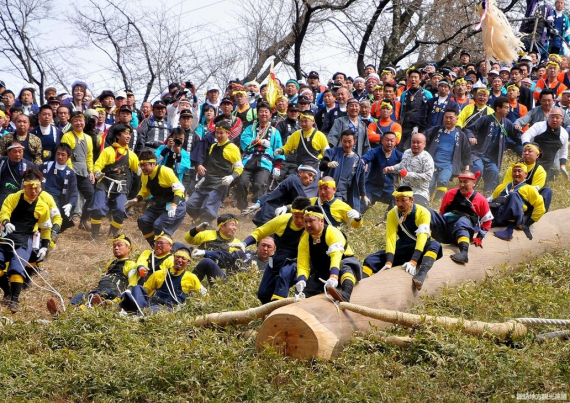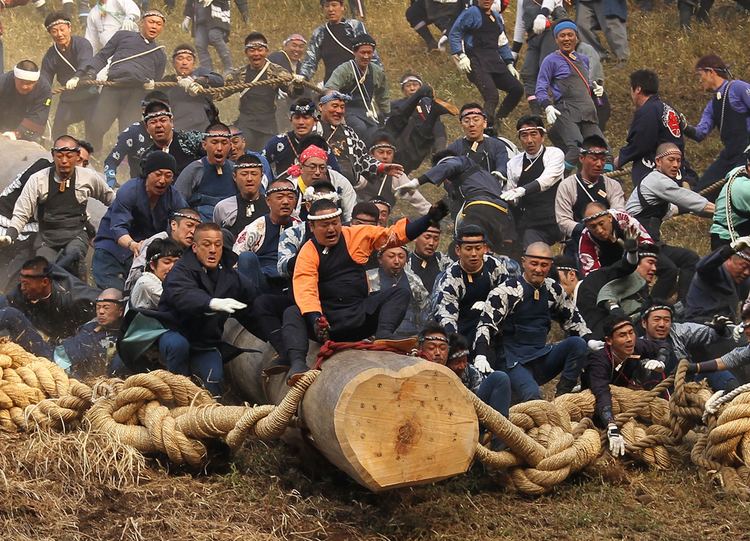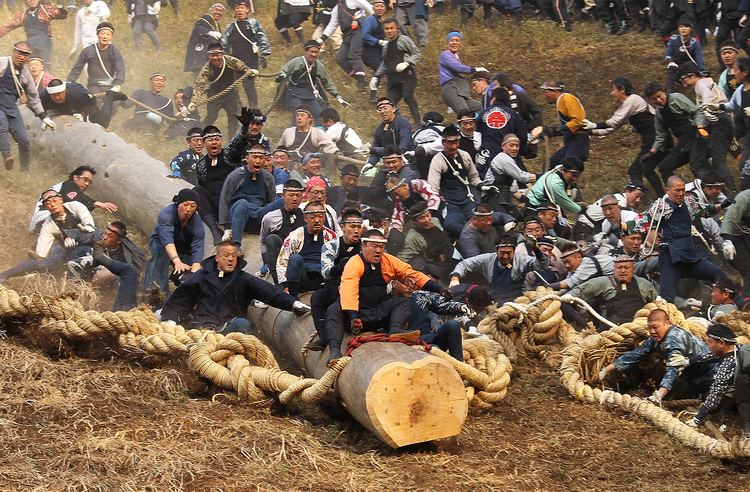Frequency Every 6 years Most recent 2016 Years active 1200 | Next event 2022 | |
 | ||
Location(s) Lake Suwa area, Nagano Prefecture | ||
Complete chaos the onbashira festival
The Onbashira Festival (Japanese: 御柱祭, Hepburn: Onbashira Matsuri, "Honored Pillars Festival") is a festival held every six years in the Lake Suwa area of Nagano Prefecture, Japan. The purpose of the festival is to symbolically renew the four shrine buildings at the Suwa Grand Shrine by felling sixteen fir trees, preparing them as honored pillars (onbashira), and transporting them down a mountain to the shrine, where they are erected at the four corners of each building. Festival participants ride the onbashira as they are slid down the mountain, dragged to the shrine, and raised, and the festival has the reputation of being the most dangerous in Japan due to the number of people regularly injured or killed while riding the logs.
Contents

The Onbashira festival is reputed to have continued uninterrupted for 1200 years. It is held once every six years, in the years of the Monkey and the Tiger in the Chinese zodiac; however, some sources state that the festival occurs every seven years, because of the traditional Japanese custom of counting time intervals inclusively. Onbashira lasts several months, and consists of two segments, Yamadashi and Satobiki. Yamadashi traditionally takes place in April, and Satobiki takes place in May.
Yamadashi

Yamadashi literally means "coming out of the mountains". Sixteen fir trees, usually about 17 to 19 metres (56 to 62 ft) tall, are selected and cut down in a Shinto ceremony using specially-made axes and adzes. The logs are decorated in red and white regalia, the traditional colors of Shinto ceremonies, and ropes are attached. During Yamadashi, teams of people drag the logs down the mountain towards the shrine. The course of the logs goes over rough terrain, and at certain points the logs must be skidded or dropped down steep slopes. Young men prove their bravery by riding the logs, which can weigh as much as 12 tons, down the hill in a ceremony known as Kiotoshi ("tree falling").
Satobiki

During Satobiki, held about a month later, the logs are paraded to the four shrine buildings where they will be erected: Honmiya, Maemiya, Harumiya, and Akimiya. Four onbashira are erected at each building, one at each corner. The logs are raised with ropes by hand, and while they are being raised, a ceremonial group of log bearers ride the logs and sing and perform other feats. This ceremony was performed as part of the opening ceremonies of the 1998 Winter Olympics in Nagano.
After the two festivals, there is an important event "Building of Hoden". This event, which marks the end of Onbashira, is not as famous as Yamadashi and Satobiki.
Incidents

Onbashira has a reputation for being the most dangerous festival in Japan, and it has led to the injury and death of participants. There were fatal incidents in 1980, 1986, 1994, 2010, and 2016. In 1994, two men drowned while a log was being pulled across a river. In 2010, two men, Noritoshi Masuzawa, 45, and Kazuya Hirata, 33, died after falling from a height of 10 metres (33 ft) as a tree trunk was being raised on the grounds of the Suwa Grand Shrine. Two other men were injured in the same accident, which organizers say occurred when a guide wire supporting the 17-metre (56 ft) tree gave way. In 2016, one man died falling from a tree as it was being raised at the shrine.
